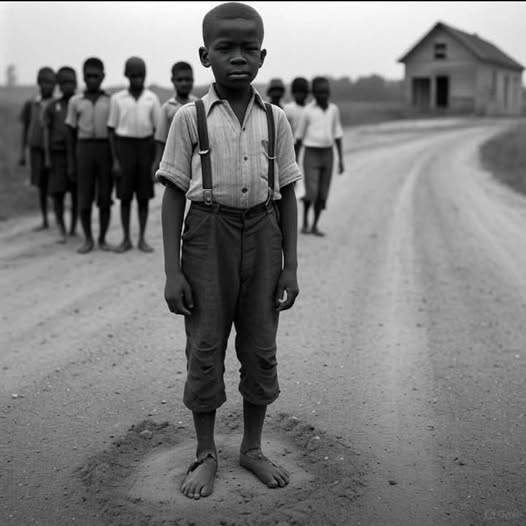In the segregated South, in a town near Clarksdale, Mississippi, there lived a young Black boy named Samuel Reed, age 12. He walked five miles to school each day—not unusual at the time. But what made Samuel stand out was that he walked barefoot. Every single day.His family, like many others during the Great Depression, could not afford shoes. Samuel’s mother had patched his soles with burlap and wrapped them in twine during winter. Still, he never complained—not once.
One day, Samuel was stopped by a white shopkeeper on Main Street who accused him of “stealing glances” at boots in the store window. The man called the sheriff. Samuel was humiliated, yelled at, and told he didn’t “deserve shoes he couldn’t buy.”
He walked home in silence. That night, his mother found him soaking his feet in cold water, silent tears rolling down his cheeks. She sat beside him and told him something he would never forget:
“They can take your shoes, baby, but they can’t take your path.”
What happened next became legend in the Delta.
The next morning, the entire Black student body—nearly 60 children—showed up to school barefoot. Word had spread fast. Teachers didn’t speak a word, but they removed their shoes too. For one week, the entire school walked barefoot together.
White townsfolk mocked them. Some were furious. But they could not stop it. Samuel, once shamed, now walked with pride.
Years later, Samuel became a cobbler, opening his own shoe repair shop. Above the door hung a sign:
“Respect walks farther than leather.”
![]()
